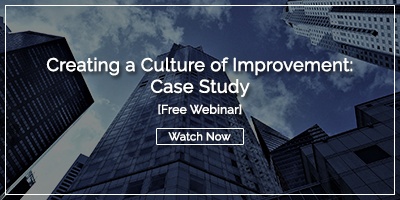
“Culture isn’t just on aspect of the game – it is the game. In the end, an organization is nothing more than the collective capacity of its people to create value.” Lou Gerstner Jr. – IBM.
These days it is a little bit embarrassing to admit that I eat fast food from time to time, but there you have it. I like French fries, and I cannot lie. And as everyone knows, McDonald's French fries are objectively the best. One of the founding principles of McDonald’s was that the food would taste the same no matter which location you visit. I’d say they have generally achieved this aim even though most locations are franchises run by hundreds of different owners across the country.
But while the food is relatively consistent, the quality of customer service is not. The employees from one McDonalds to another are paid about the same. The employees come from the same labor market. The functional job requirements are the same. So why do some locations operate efficiently with friendly and engaged employees, while others have workers who are indifferent?
The Answer is Culture
The owners and managers of each location get to decide what behavior is acceptable and what is not. They set the standard by recognizing and rewarding the type of service they desire and getting rid of employees who don’t rise to the required level. They hire people who exhibit the aptitude for excellence and don’t settle for folks that will fill the uniform, but not the values.
Of course, leadership’s impact on culture, and therefore, customer value, is not limited to McDonald’s. The consistency of the product and the number of locations just makes it easy to observe and compare. But every organization has a company culture, whether leaders think about it or not. Is yours more like the McDonalds with fast, friendly service, or more like the one where you have to double-check your order before leaving the drive-through?
All Workers are Decision Makers
We tend to think of “decision-makers” as the folks who can re-org the company or sign off on a PO, but the reality is all workers are decision-makers. We all make tons of decisions, most without thinking too much about it, that impact the value delivered to the customer. In fast food, a decision might be whether to ask the customer whether they want ketchup with their fries. In a call center, it might be whether to document an interaction in the CRM. On the factory floor, it might be whether to return a piece of equipment to its proper place. In a vacuum, none of these are life and death decisions, but when you add up hundreds of these kinds of choices across all employees every day, the impact on results is enormous.
It’s culture that informs these decisions. People take their cues about how to behave from the behavior of those around them. That’s why you probably act differently at the library than at a baseball game. You don’t need a rule book; you just see what’s going on and act accordingly. The work environment is no different. People rise to the standards that they see exhibited, and they make decisions through that lens.
The First Rule of Company Culture
Culture isn’t like Fight Club. You have to talk about it. The first step is to assess the condition of the culture as it exists today. Your employees will probably be happy to share their thoughts about the ethos of the organization and ideas for improving it. It can be challenging for leaders to admit that everything isn’t perfect, but transparency is an essential component of great culture. The idea isn’t to target any individual employee but to recognize and talk about the behaviors that you do and don’t want to see.
Don’t Confuse Culture and Benefits
Often when leaders face a culture crisis, they try to address it with perks - more vacation time, higher pay, causal Fridays, a pool table in the break room. None of that stuff will likely hurt, but keep in mind that the employees at the “good” McDonald's and the crappy one operates under very similar working conditions with the same pay and benefits. Yet the quality of service is markedly different. It isn’t the perks that matter; it’s the expectations. What’s normal at one location simply isn’t at another.
I don’t mean to pick on McDonald’s; it is just a glaring example of how the same set of conditions and resources can produce dramatically different results. No matter what services or products you deliver, keep in mind that your organization’s culture is baked into whatever you offer. Is it adding value?




Add a Comment